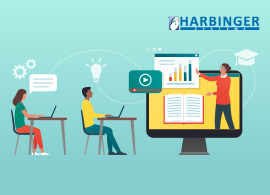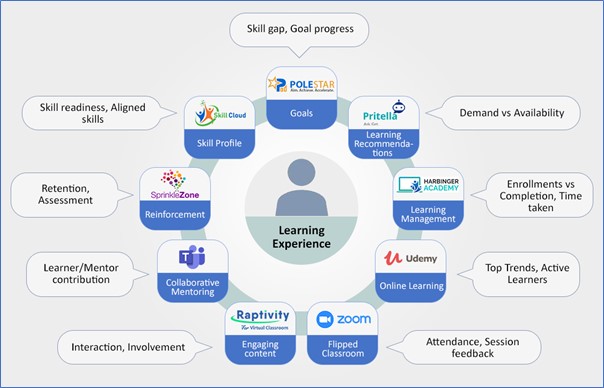
Empowering the Learner
There are paradigm shifts happening in the way learning is being driven and managed in the corporate world.
The typical aspects associated with learning in the corporate world are as follows: –
- There is an L&D department which is tasked with managing the learning across the company
- The company has an LMS through which the learning processes are administered
- The L&D department publishes curriculums and training calendar and follows up for enrollments
- People are trained in batches and the training content is the same for all trainees
- The department has trainers and sometimes it outsources the training
- The typical data that is collected has to do with number of attendees, number of training hours and trainer/course feedback
- The learning track is typically quite disconnected from the performance management track
This situation is however changing rapidly.
- Learning is becoming democratized. There is shift from it being an L&D driven calendarized process to a learner centric on demand process
- The learner’s journey map now drives the entire learning process and learning experience
- In addition to the LMS, many new systems and technologies will now play a key role. Technologies to support micro learning, learner analytics and personalization, on demand learning on the device of choice are just some of the examples
- Integration with multiple sources of learning content is becoming essential given that individuals now need to acquire a larger number of skills at any given time
Taking into consideration the changing situation, Harbinger has put together a vision for a Learner Centric Ecosystem.
What is the Learner Centric Ecosystem?

The learner centric ecosystem aims at giving an end to end learning experience right from planning the learning goals to acquiring new skills. The ecosystem provides learners multiple choices about how and when to learn in a self-directed way.
It all starts with an understanding of the current skill profile of the learner with regards to the organization needs and the current work assignment need. This interaction between the learner and her manager/mentor is supported by POLESTAR, a continuous performance enablement system which enables and records the discussions as well as the learning goals that get formalized in this interaction.
Pritella, a conversational chatbot, helps the Learner gets recommendations on suitable learning programs available in Academy, the central LMS or external sources like Udemy.
The Learner then makes a choice of the preferred learning program and enrolls into Academy. Academy helps the learner to create personalized learning plans and figure out the right instructors and mentors.
Using a blended learning model, the Learner leverages courses on Academy or Udemy. Via Zoom based live sessions with instructors/mentors, the learner gets the right guidance through the learning process. This blended learning or flipped classroom model helps the Learner to learn effectively at the desired pace and on the device of choice.
It is extremely essential to keep the learner engaged during the learning process. Raptivity Virtual Classroom (Raptivity VC) helps embed interactions in the live sessions. Raptivity VC also helps capture the engagement and attention to specific key points during the discussion keeping the session more interactive.
MS Teams and other collaboration channels enable the ongoing connect with the Mentor/Expert for continued learning and feedback as well as enable social learning.
The Learner gets assessed based on the progress as per the complexity levels, using SprinkleZone, a micro learning product. SprinkleZone also nudges the Learner to reinforce the learning over a period to overcome the forgetting curve.
Post successful completion of every learning program, the learner profile is updated on Skill Cloud, a system that keeps a record of the Learner Skill Map.
Right through the learner journey, the analytics systems in the Learner centric ecosystem consume different types of learner data and generate insights and reports. Providing insights in the areas of skill gaps, learner engagement, learning speeds, social learning effectiveness are just some of the examples of how the learner data is leveraged. This data is fed back to the Learner and her mentor/manager to help in course corrections.
To Summarize
There are paradigm shifts happening in the world of learning. The Learner centric ecosystem is one of them. It is essential that corporates adopt this roadmap to transform their learning strategy and model so that their employees can equip themselves to address the business challenges in this rapidly changing environment.
We recently did a webinar on the topic ‘Transitioning to Remote Learning with Integrated Learning Systems.’






